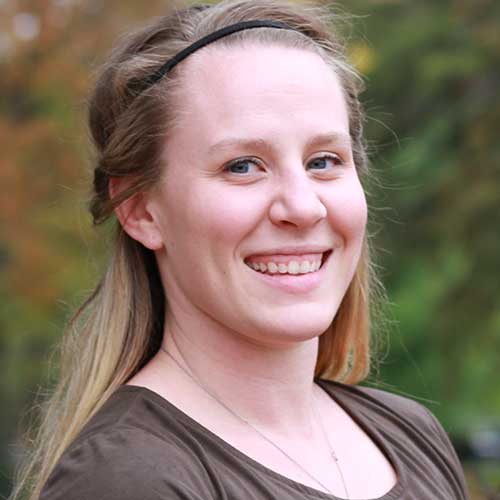
Child and adolescent nurse exemplifies the compassion Rogers is known for
02/20/18 03:08:pm
Samantha joined the Child and Adolescent Eating Disorder unit of Rogers–Oconomowoc in August 2016 because she “wanted to work somewhere where I could make a difference to my patients and help them overcome the struggles they may be facing.”
She was first inspired to become a nurse by her grandmother, who was a retired nurse while she was growing up. Samantha says that she would examine her grandmother’s old nursing books with intrigue and used her stethoscope to nurse her stuffed animals back to health. After growing up a bit more, she understood what the day-to-day of being a nurse meant, and it solidified her decision.
“I knew it was what I was meant to do,” Samantha says. “I love patient to nurse interaction and being able to help my patients get one step closer to a healthy lifestyle.”
Samantha has already made what she says are “many amazing memories” despite only being with Rogers for a little over a year now. On memory in particular sticks out for her.
“I was sitting with a group of patients and something was “off” with one of them,” she explains. “They always tell you in nursing school that you’ll experience moments like these; where something doesn’t feel right but you aren’t able to pinpoint it. When we came back inside, I pulled the patient aside to talk and see if she was doing okay.
“She disclosed that she had strong self-harm and suicidal thoughts with a plan and intent to act that evening.”
Samantha talked with the patient for an hour, helping her to process her thoughts and develop a safety plan together. While the patient was initially upset that she would have to be placed on 1:1 supervision, Samantha convinced her that it was necessary.
“We talked about the importance of a 1:1 and that if I didn’t call the doctor, that I wouldn’t be doing my job, which is to ensure that she is safe,” she shares. “We talked a little longer and she accepted that a 1:1 was the right thing for her safety.”
When Samantha talked with her the next day with the patient, she was surprised at the reaction she received.
“The following day when I was checking in with her she randomly said ‘Thank you.’ I wasn’t sure what she was thanking me for, so when I asked, she said ‘for taking the time to notice something was wrong yesterday; most people wouldn’t have noticed.’”
Samantha says that she was taken aback by the comment, and that that in her mind, she was only doing her job. Experiences like these are what keep Samantha going, even on the tougher days, she says.
“We oftentimes work with patients who don’t want to recover and push back on the care we are providing them, so when a patient says thank you and sincerely means it, it sticks with you.”
Samantha enjoys spending time with family and friends, reading, and enjoying time outside. She also loves taking part in typical seasonal and holiday activities and says she can’t turn down a new adventure.





